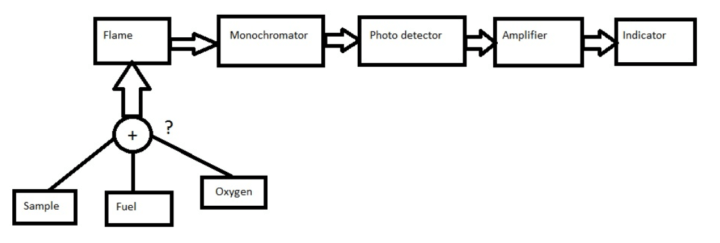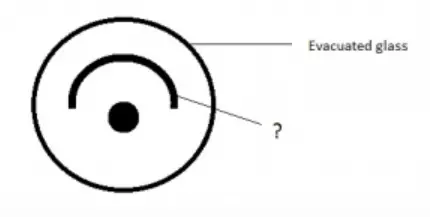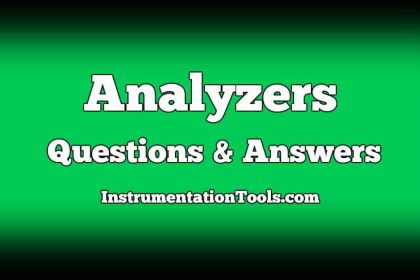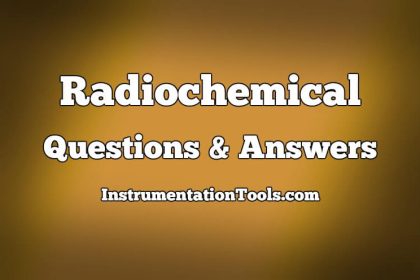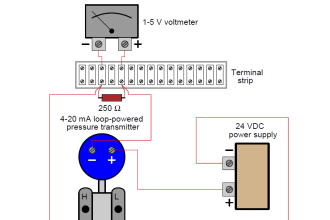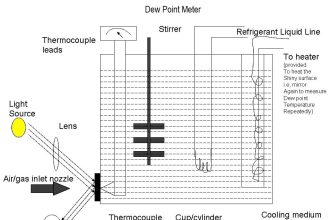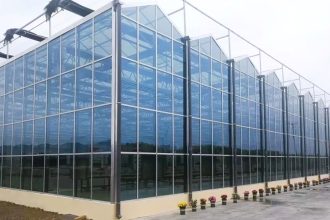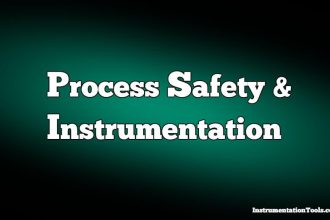Flame Emission Photometers Questions & Answers
1. The function of pressure regulators in emission system of flame photometer is to have a steady flame which is free from flickers.
a) True
b) False
Answer: a
Explanation: The function of pressure regulators is to have a steady flame which is free from flickers. Pressure gauges indicate the pressure.
2. In Total consumption burner, only samples of particular droplet size will enter the burner.
a) True
b) False
Answer: b
Explanation: Samples will enter the burner irrespective of their droplet size. Hence, it has the name Total consumption burner.
3. Which of the following is the principle of Flame emission photometers?
a) Radiation is absorbed by non-excited atoms in vapour state and are excited to higher states
b) Medium absorbs radiation and transmitted radiation is measured
c) Colour and wavelength of the flame is measured
d) Only wavelength of the flame is measured
Answer: c
Explanation: In Flame emission photometers, colour and intensity of the flame is measured. The intensity of light emitted when sample is introduced into the flame is also measured.
4. In Flame emission photometers, the measurement of _____________ is used for qualitative analysis.
a) Colour
b) Intensity
c) Velocity
d) Frequency
Answer: a
Explanation: The colour and the wavelength of the flame are used for qualitative analysis. It is used to determine the element which is present in the sample.
5. In Flame emission photometers, the measurement of _____________ is used for quantitative analysis.
a) Colour
b) Intensity
c) Velocity
d) Frequency
Answer: b
Explanation: The intensity of the flame is used for quantitative analysis. It is used to determine the amount of element present in the sample.
6. Which of the following is not an advantage of Laminar flow burner used in Flame photometry?
a) Noiseless
b) Stable flame for analysis
c) Efficient atomization of sample
d) Sample containing two or more solvents can be burned efficiently
Answer: d
Explanation: Sample containing two or more solvents cannot be burned efficiently in Laminar flow burner. One more advantage of laminar flow burner is that it allows steady movement of gas flow.
7. Laminar flow burner used in Flame photometers is also known as ____________
a) Turbulent burner
b) Premix burner
c) Total consumption burner
d) Nozzle mix burner
Answer: b
Explanation: Laminar flow burner used in Flame photometers is also known as Premix burner. Sample, fuel and oxidant are mixed thoroughly before reaching the burner.
8. Which of the following is the advantage of prism monochromators?
a) Dispersion is non-overlapping
b) Dispersion occurs in non-linear manner
c) Dispersion is overlapping
d) Dispersion occurs in a linear manner
Answer: a
Explanation: The advantage of prism is that, dispersion that occurs is non-overlapping. The disadvantage is that it occurs in a non-linear manner.
9. Which of the following is the advantage of grating monochromators?
a) Dispersion is non-overlapping
b) Dispersion occurs in non-linear manner
c) Dispersion is overlapping
d) Dispersion occurs in a linear manner
Answer: d
Explanation: The advantage of grating is that, dispersion that occurs is linear. The disadvantage is that the dispersion is overlapping.
10. Which of the following is not a detector used in Flame emission photometers?
a) Photronic cell
b) Photovoltaic cell
c) Photoemissive tube
d) Chromatogram
Answer: d
Explanation: Detectors used in Flame emission photometers are Photovoltaic cell and photo emissive tubes. Photovoltaic cell is also known as photronic cell.
11. Phototubes are more sensitive than photovoltaic cells.
a) True
b) False
Answer: a
Explanation: Phototubes are more sensitive than photovoltaic cells. Therefore, it can be used to measure low intensities.
12. Which of the following is not an application of Flame emission photometers?
a) Analysis of biological fluids
b) Determination of sodium, potassium in soil
c) Determination of metals such as Mn, Cu
d) Analysis of complex mixtures
Answer: d
Explanation: The applications of Flame emission photometers are analysis of biological fluids, determination of sodium and potassium in soil and determination of metals such as Mn and Cu. It is also used for the analysis of plant materials and industrial cements.
13. Given below is the diagram of Flame emission photometers. Identify the unmarked component.
a) Filter
b) Atomiser
c) Pressure regulator
d) Burner
Answer: d
Explanation: The unmarked portion is Burner. Burner is where flame is obtained by mixing sample, fuel and oxygen.
14. Given below is the diagram of evacuated glass tube of photo emissive tube. Identify the part which is indicated with a question mark.
a) Anode
b) Cathode
c) Grid
d) Dynode
Answer: b
Explanation: The cathode is formed of half cylinder. The anode is a metal ring near the center of the glass.
15. Which of the following is not an advantage of photovoltaic cell which is used as a detector in Flame emission photometers?
a) Portable
b) No external supply
c) Robust in construction
d) Does not show fatigue
Answer: d
Explanation: It does show fatigue. It shows decrease in response with continued illumination.
